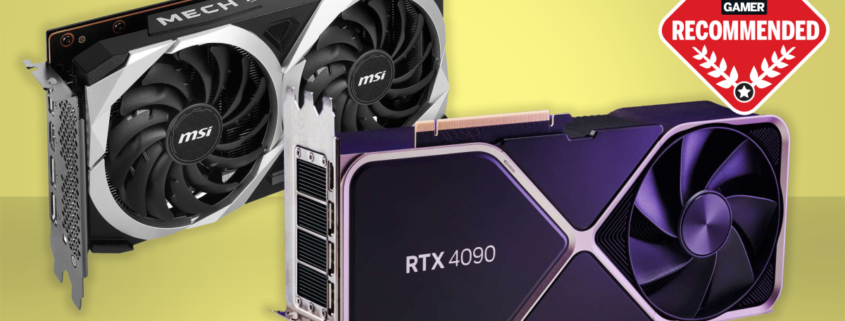The best graphics cards in 2022







It’s almost a complete sweep for AMD for the best graphics card title right now. That’s not for a lack of excellent Nvidia GPUs over the past year or more, it’s simply down to what your money will get you nowadays. And it’s a lot more when you buy an AMD GPU.
There are heaps of cheap graphics card deals (opens in new tab) out there, and almost all of them AMD graphics cards going for much less than their original asking price. That’s why you’ll see some cards we didn’t love all that much at launch now making it into this list of the best around.
These may be budget cards on offer, but they’re also the least likely to be made redundant by a next-generation GPU anytime soon. And they’re plenty good enough for 1080p and 1440p gaming.
But we are also getting closer to that time of year when the best graphics cards might not be the best graphics cards for much longer. In fact, Nvidia’s RTX 4090 has already made mincemeat of most of the RTX 30-series in performance, albeit for a massive price tag, and soon we’ll see AMD’s RX 7900 XTX and RX 7900 XT join the fray.
It’s important to note that with new GPUs coming soon, expect more performance for less. That means the high-end RX 6950 XT and RTX 3090 Ti probably aren’t your best bet right now, as your money should get you much more performance in a matter of months. More budget-conscious GPUs like the RTX 3060 (opens in new tab) or RX 6600 XT (opens in new tab) aren’t likely to be replaced by shiny new cards immediately, however, so these are the cards we’re currently recommending. Well, one of them anyways.
Why you can trust PC Gamer Our expert reviewers spend hours testing and comparing products and services so you can choose the best for you. Find out more about how we test.
Best graphics card
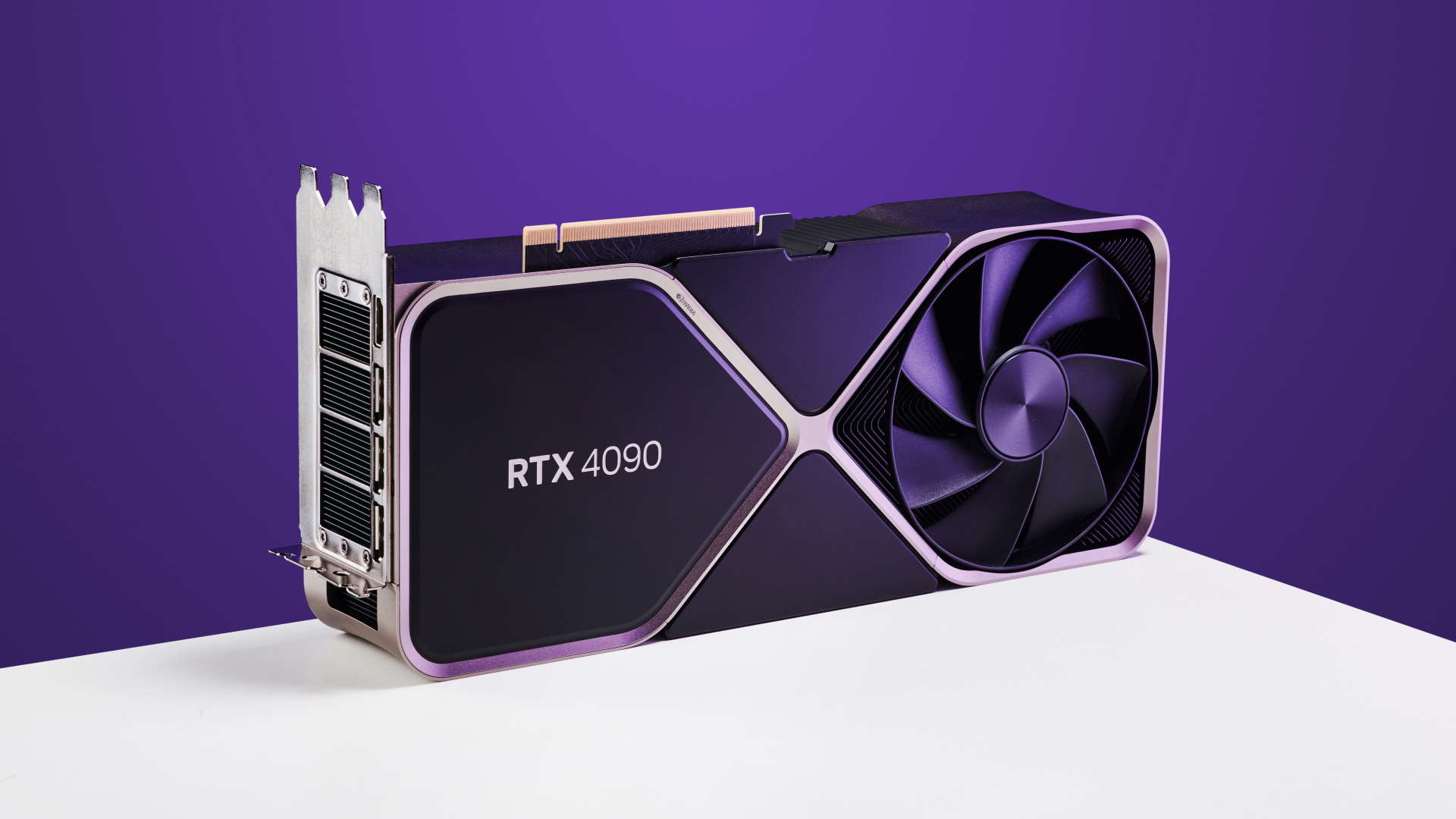
There’s nothing subtle about Nvidia’s GeForce RTX 4090 graphics card. It’s a hulking great lump of a pixel pusher, and while there are some extra curves added to what could otherwise look like a respin of the RTX 3090 shroud, it still has that novelty graphics card aesthetic.
It looks like some semi-satirical plastic model made up to skewer GPU makers for the ever-increasing size of their cards. But it’s no model, and it’s no moon, this is the vanguard for the entire RTX 40-series GPU generation and our first taste of the new Ada Lovelace architecture.
A hell of an introduction to the sort of extreme performance Ada can deliver.
On the one hand, it’s a hell of an introduction to the sort of extreme performance Ada can deliver when given a long leash, and on the other, a slightly tone-deaf release in light of a global economic crisis that makes launching a graphics card for a tight minority of gamers feel a bit off.
But we can’t ignore it for this guide to the best GPUs around simply because, as it stands today, November 2022, there’s no alternative to the RTX 4090 that can get anywhere close to its performance. It’s unstoppable, and probably will stay ahead of the pack as AMD sees its two new RDNA 3 cards as more RTX 4080 16GB competitors (opens in new tab).
This is a vast GPU that packs in 170% more transistors than even the impossibly chonk GA102 chip that powered the RTX 3090 Ti. And, for the most part, it makes the previous flagship card of the Ampere generation look well off the pace. That’s even before you get into the equal mix of majesty and black magic that lies behind the new DLSS 3.0 revision designed purely for Ada.
Look, it’s quick, okay. With everything turned on, with DLSS 3 and Frame Generation working its magic, the RTX 4090 is monumentally faster than the RTX 3090 that came before it. The straight 3DMark Time Spy Extreme score is twice that of the big Ampere core, and before ray tracing or DLSS come into it, the raw silicon offers twice the 4K frame rate in Cyberpunk 2077, too.
There’s no denying it is an ultra-niche ultra-enthusiast card, and that almost makes the RTX 4090 little more than a reference point for most of us PC gamers. We’re then left counting the days until Ada descends to the pricing realm of us mere mortals.
In itself, however, the RTX 4090 is an excellent graphics card and will satisfy the performance cravings of every person who could ever countenance spending $1,600 on a new GPU. That’s whether they’re inconceivably well-heeled gamers, or content creators not willing to go all-in on a Quadro card. And it will deservedly sell, because there’s no other GPU that can come near it right now.
Read our full Nvidia GeForce RTX 4090 review (opens in new tab).
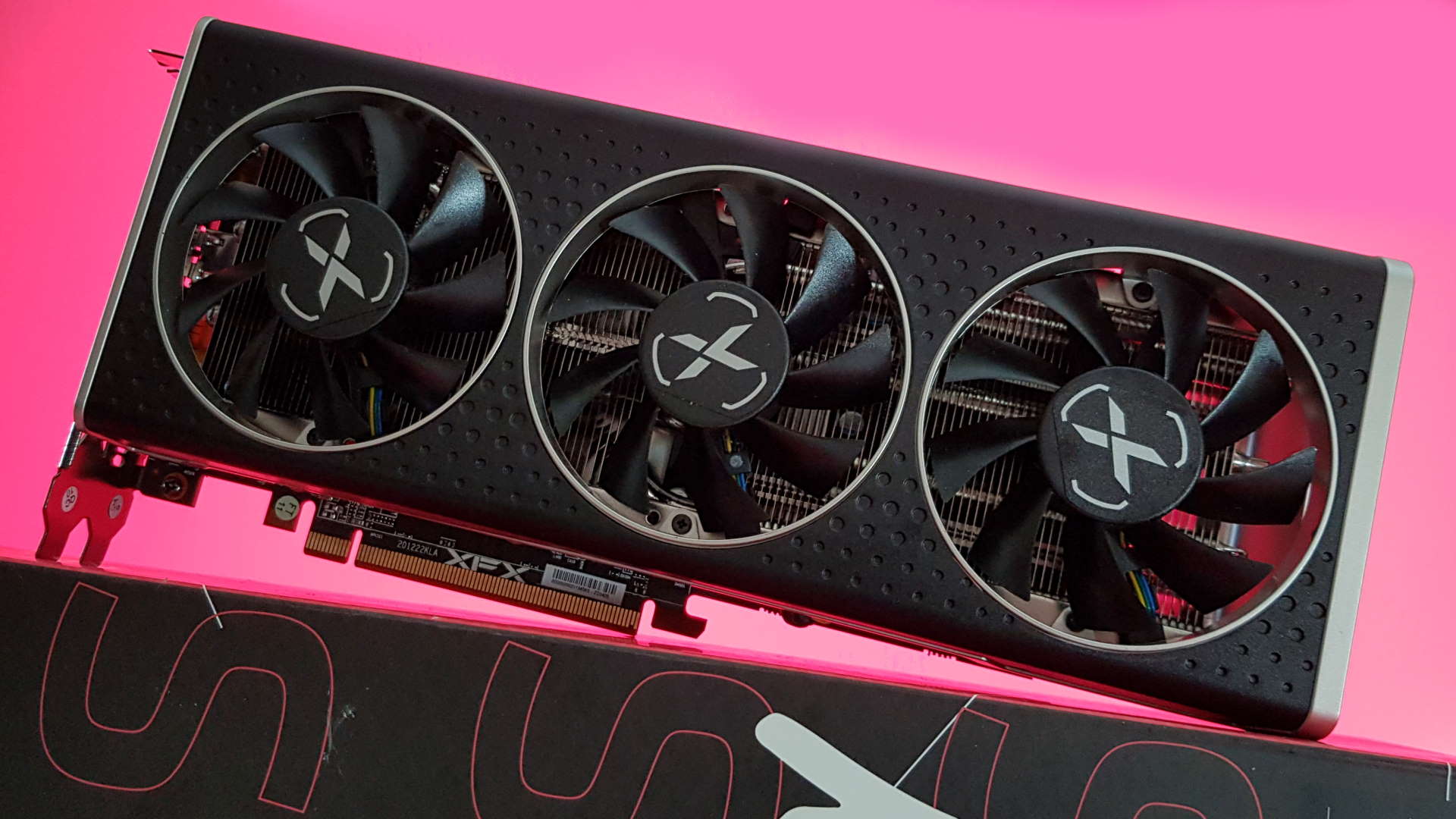
AMD’s Radeon RX 6600 XT launched with its heart set on toppling Nvidia’s RTX 3060 Ti, or get close to it. Sadly, it wasn’t quite there at the time, and with a price tag of $379 it became a hard sell. However, AMD later followed up that launch with the RX 6650 XT, which is a moderately (slightly) faster version of the RX 6600 XT. What’s even better than that is nowadays the RX 6650 XT is dramatically cheaper than its Nvidia competition and well under its MSRP. Hallelujah!
So now AMD’s RX 6650 XT is by far the better buy than anything it’s up against. AMD’s affordable GPUs have matured like fine wine. Which is absolutely classic behaviour for AMD.
The AMD Radeon RX 6600 XT features the Navi 23 GPU; one of its second-gen Navi chips based on the seriously impressive RDNA 2 architecture. It’s another TSMC N7 (7nm) graphics processor, but the smallest of all the current-gen AMD GPUs. Despite its small scale, though, it packs in more transistors than even the most powerful of the first generation Navi cards, the Navi 10 chip at the heart of the RX 5700 XT.
When it comes to speeds and feeds we’re talking about a chip with 32 Compute Units (CUs) at its heart, with a total of 2,048 stream processors. The same as the RX 6600 XT. However, it’s capable of hitting a max clock speed of a blistering 2,635MHz, which is wildly quick by anyone’s standards.
AMD’s RX 6650 XT is by far the better buy than anything it’s up against.
For that speed, it confidently beats Nvidia’s cheapest Ampere GPU, the RTX 3060, across the board. That’s important as it’s actually competing with, and consistently beating, the RTX 3060 on price.
The best showing for the newest Navi GPU is at its 1080p target resolution. That’s generally been the case for AMD’s cards compared to their Nvidia competition this time around. It’s plenty capable at 1440p, too, though you might want a bit more power if you intend to operate a 4K screen.
The RX 6650 XT is definitely one to look out for in the lead up to Black Friday and during the busy shopping period. It’s already going cheap, yes, but at under $300 this would be an absolute steal. Even right now it’s going for as little as $260, so fingers crossed it gets even cheaper still.
Read our full AMD Radeon RX 6650 XT review (opens in new tab).
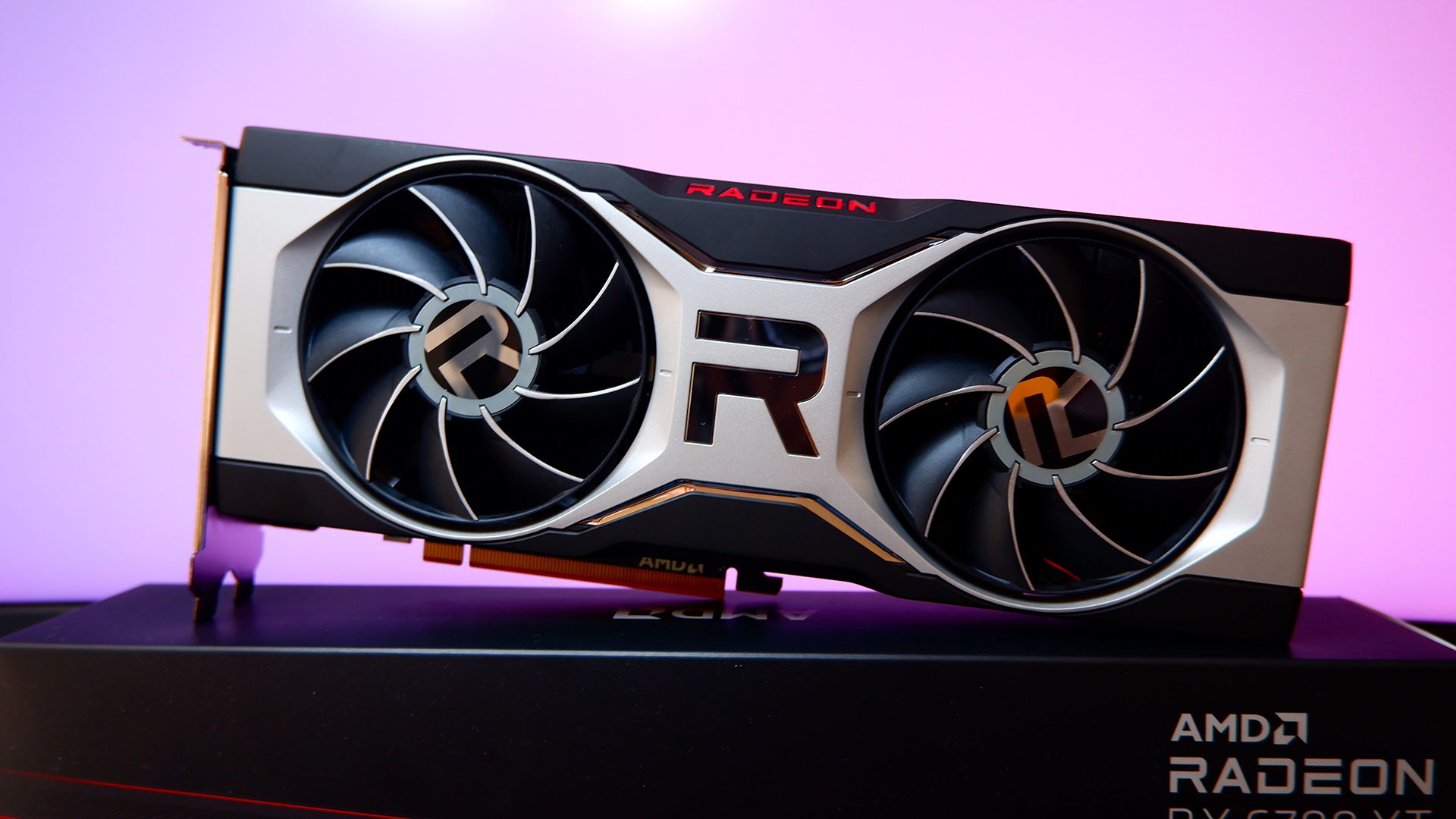
There’s a certain level of pomp and excitement that comes with every major architectural overhaul, though perhaps we’re not giving enough love to what comes after. Those more affordable graphics cards that actually bring that new technology to the masses are just as important, if not more so to many gamers eyeing up an upgrade. The AMD Radeon RX 6700 XT was the beginning of that journey for RDNA 2: The GPU with the grunt of a next-gen console for under $500.
We’re not talking the cheapest of chips here. The Radeon RX 6700 XT is still a high-end card by most counts, but its price tag is slipping into the more affordable end of the market by the week, and that’s high up on a list of things we absolutely love to see in 2022.
There’s more to the Radeon RX 6700 XT than a simple halving of silicon from AMD’s top chip, the Radeon RX 6900 XT (opens in new tab). In some ways, sure, it’s a straight slice down the middle. The RX 6700 XT features 40 compute units (CUs) for a total of 2,560 RDNA 2 cores and is equipped with 64 ROPs—exactly half of the maximum configuration of the Navi 21 GPU—but the card comes with more than its fair share of memory and Infinity Cache.
Often quite a reasonable amount cheaper than the RTX 3060 Ti.
A headline feature of AMD’s RDNA 2 lineup has been bigger than thou memory capacities compared with rival GeForce GPUs, and the RX 6700 XT doesn’t buck that trend. There’s 12GB of GDDR6 packed onto this card: an attempt at what we optimistically call ‘future-proofing’. That’s greater VRAM capacity than the RTX 3060 Ti and RTX 3070, and is a match for the RTX 3060 12GB.
With a price tag closer to the GeForce RTX 3070, yet performance between it and the GeForce RTX 3060 Ti, most often closer to the latter, the Radeon was a solid alternative but hadn’t been my first port of call for this sort of cash for a good portion of its life. That’s all changed now that it’s often quite a reasonable amount cheaper than the RTX 3060 Ti.
That said I still think you could pick up an RTX 3060 Ti right now and be happy with it. If only because that card was possibly the best value proposition of the entire RTX 30-series, and is still something close to that (it’s all out of whack). If ray tracing doesn’t bother you and you’d prefer the extra memory, however, the RX 6700 XT is the more all-round GPU to buy right now.
Read our full AMD Radeon RX 6700 XT review (opens in new tab).
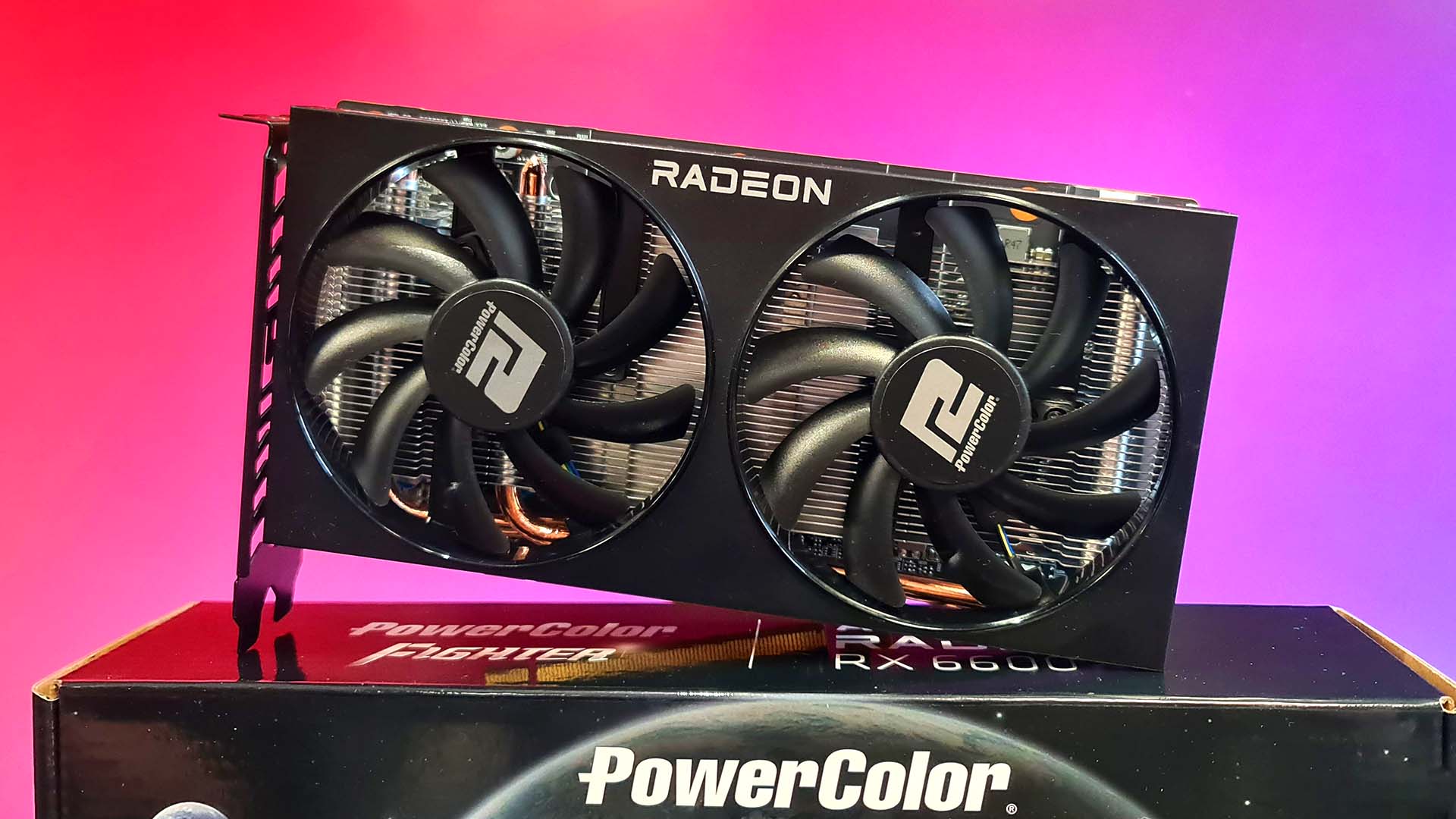
It’s not been a great few years to buy into PC gaming or build your own machine. However, things are finally improving. Stock can still be hit or miss, but prices have started to become reasonable again.
That’s far more true of AMD’s graphics cards than Nvidia’s right now, and no more so than in the budget lineup. The RX 6600 wasn’t super impressive to us at launch, considering it asked the same amount of cash as an RTX 3060 12GB but was often beaten by the green team’s card. However, it’s now much, much cheaper. It’s even cheaper than Nvidia’s RTX 3050, which makes it a much smarter buy than both cards.
It’s even cheaper than Nvidia’s RTX 3050.
There’s always the threat of Nvidia here, as if it ever did drop its prices on the RTX 3060 12GB, it’d be the better pick. AMD card comes with 4GB less VRAM, often lower gaming performance, and one of its more valuable features, FidelityFX Super Resolution, is available cross-vendor. However, we’ve not seen any sign of Nvidia doing much about its high prices right now.
The RX 6600 is plenty capable of 1080p gaming in the modern age, don’t fret about that. It’s built using AMD’s RDNA 2 architecture, which is still, just about, the top dog out of the Radeon camp. One day soon it’ll be replaced by the RDNA 3 architecture, but that’ll be only the high-end cards arriving at first—the RX 6600 has a lot of life left in it yet.
Read our full AMD Radeon RX 6600 review (opens in new tab).
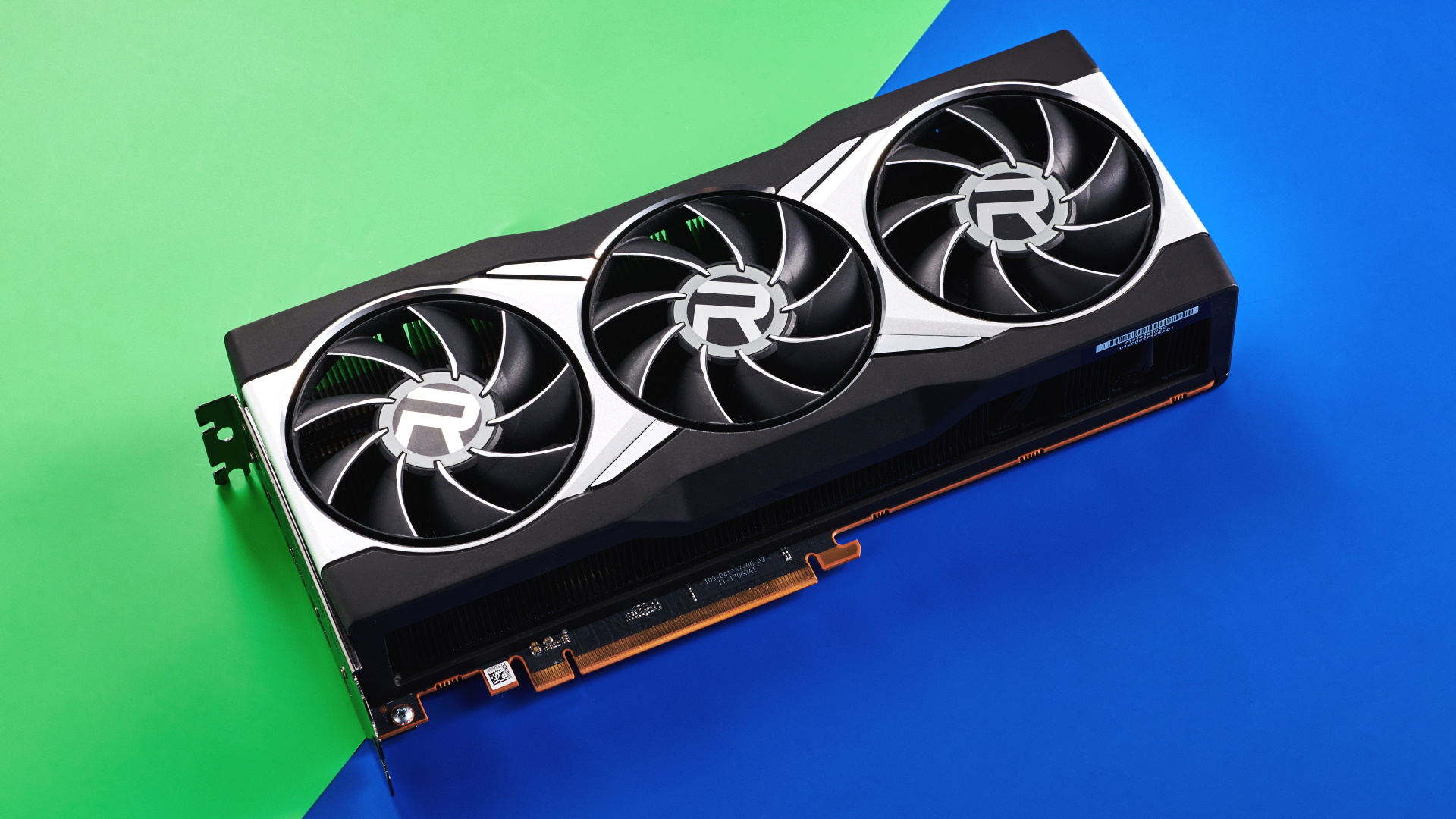
As a red team alternative to Nvidia’s high-end graphics cards, there have been few finer than the RX 6800 XT. A highly competitive card that comes so close to its rival, with a nominal performance differential to the RTX 3080, is truly an enthusiast card worth consideration for any PC gamer with 4K in their sights.
The RX 6800 XT was the first of AMD’s RDNA 2 GPUs to enter the fray, and while we’ve had plenty of other cards since, this is the one that shines brighter than most and makes the most sense financially. At least it does if you consider its MSRP, which it’s often found going for much less than. Meanwhile Nvidia’s RTX 3080 is rarely found for anything close to its original launch price.
We’re big fans of what AMD has managed to accomplish with the RX 6800 XT.
A key battleground for Nvidia and AMD this generation has been on the memory front—covering both bandwidth and capacity. The RX 6800 XT comes with 16GB of GDDR6 across a 256-bit bus for a total bandwidth of 512GB/s. That means AMD has Nvidia’s 10GB RTX 3080 on the ropes in terms of capacity but falls slightly behind in raw bandwidth to the RTX 3080’s 760GB/s.
AMD has an ace up its sleeve in throughput terms in the form of its Infinity Cache, which bolsters the card’s ‘effective bandwidth’ considerably. Some 1,664GB/s, by AMD’s making—a 3.25x improvement over the RX 6800 XT’s raw bandwidth. In gaming terms, it means you’re looking at similar performance, despite the very different underlying technologies.
It’s a tough call between the RX 6800 XT and the RTX 3080, but the latter pips AMD to the post with the final touches à la RTX. That’s only really a consideration worth making if you’re assuming some sort of similarity in price between the two, which right now there often isn’t. The RX 6800 XT is often the far cheaper card, so the worse ray tracing performance and lack of DLSS really don’t mean as much as they once did.
AMD’s FidelityFX Super Resolution has also gained considerable momentum among developers and offers solid upscaling that’s worth enabling in supported games. The introduction of FSR 2.0 in Deathloop (opens in new tab) offers a tantalising glimpse of what the future holds too as more developers roll out the new and improved version.
The RX 6800 XT leaves AMD in an incredibly strong position going forward, delivering what is required to get the entire industry to take notice, and with a strong proposition to offer gamers instantly at launch. And it’s no surprise to hear the cooperation between Zen and RDNA engineers had a part to play in all this, too.
All of which is to say that AMD has evolved on what was already a promising architecture in RDNA and delivered it in a fantastic graphics card in the RX 6800 XT. And not the least bit impressive in just how swiftly it has achieved near performance parity with Nvidia. There’s still some way to go to claw back market share from the green team, but step one on RTG’s to-do list (build a high-end GPU) can be confidently checked off with the release of the RX 6800 XT.
Read our full AMD RX 6800 XT review (opens in new tab).
Best CPU for gaming (opens in new tab) | Best DDR4 RAM (opens in new tab) | Best gaming motherboards (opens in new tab)
Best SSD for gaming (opens in new tab) | Best gaming laptop (opens in new tab) | Best gaming monitors (opens in new tab)
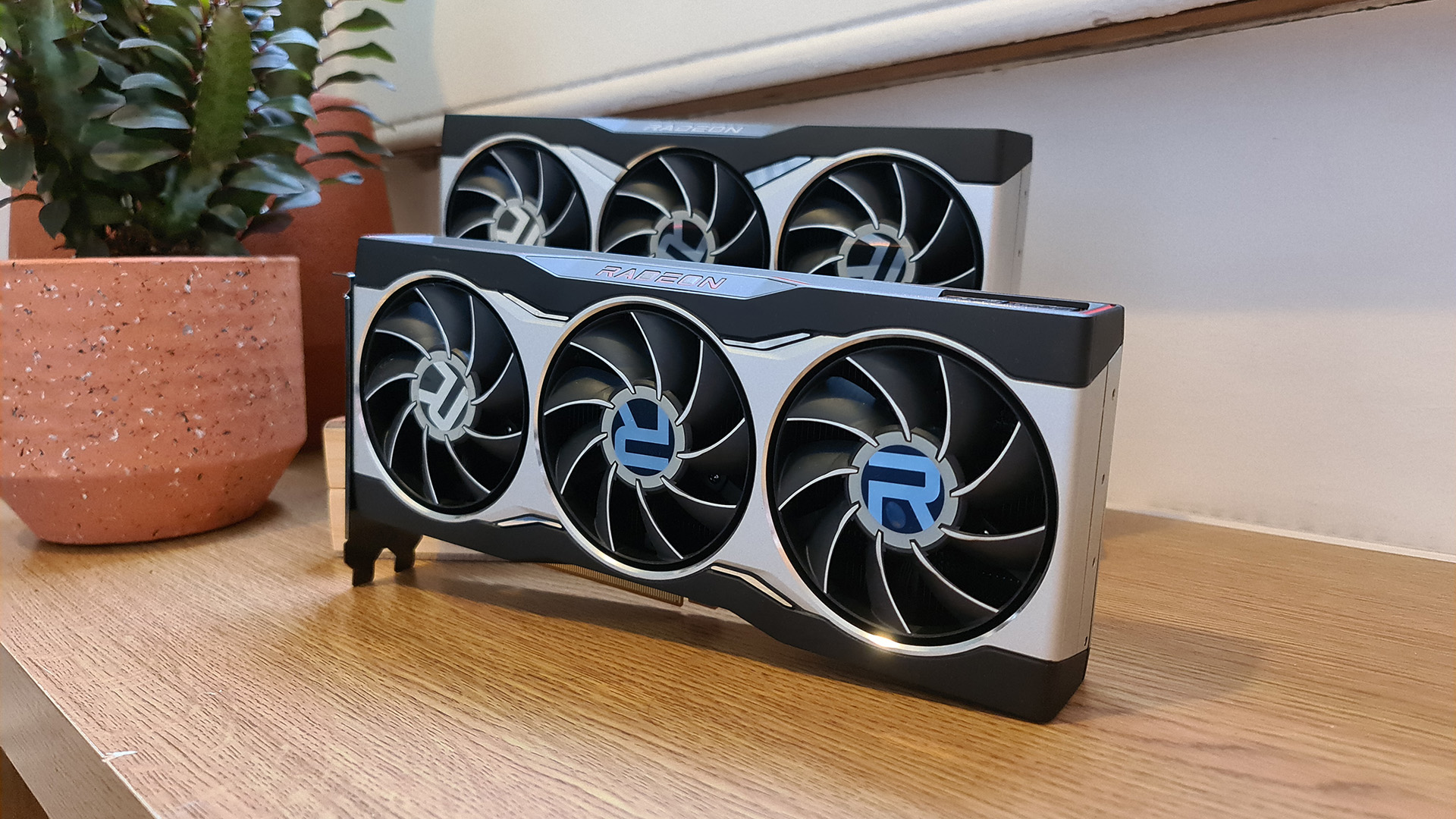
The RTX 3090 may have sat unchallenged at the top rungs of graphics performance at launch, but it wouldn’t be long until AMD rustled together a challenger in the RX 6900 XT, or ‘Big Navi.’ The RX 6900 XT hopes to knock Ampere’s finest from its perch on high and send it spiralling back down to Earth. And it gets kind of close, too, with 4K performance a little off the pace of the RTX 3090.
The issue at launch was that the RX 6900 XT couldn’t really match the RTX 3090 all the time, and in fact often slipped back to the RTX 3080 10GB at times. However, that’s really not an issue anymore, as it’s pretty much always available for less cash than an RTX 3080 10GB.
So an occasional RTX 3090 competitor with heaps of GDDR6 memory for less than the price of an RTX 3080 10GB. The graphics gods are smiling upon us.
For that reason, it’s simply the better buy for any PC gamer, and even those with any ulterior motives of the pro-creator variety. That 16GB VRAM capacity comes in handy when you’re using your PC for more intensive creation tools.
For raw gaming alone, the RX 6900 XT is a cheaper alternative to the RTX 3090.
We used to also feel the RX 6800 XT was a much better choice than this, and that’s still somewhat true considering prices for both cards have come crashing down. But nowadays there’s not as much in it between them as there once was, which means you can safely make the leap to the RX 6900 XT without breaking the bank.
AMD has since released the RX 6950 XT to compete mano a mano with Nvidia’s more recent RTX 3090 Ti (opens in new tab). Both of these cards are extreme in performance, and price: demanding well over $1,000.
The thing is, at least in my opinion, I’d rather stick with the standard RX 6900 XT if it means saving $100 or even more. The speedier RX 6950 XT isn’t often found for as little as the RX 6900 XT, and there’s not enough in it between them to sway me. The RX 6950 XT is one to look out for if it drops in price, however. It very well might end up being a similar price to the RX 6950 XT once AMD’s next gen RX 7000-series start to arrive.
That’s the other thing you’ll want to consider. As I mentioned at the top of this article, the next-gen is coming from AMD. The RX 7900 XT (opens in new tab) is technically cheaper than the RX 6900 XT was at launch, and the RX 7900 XTX bang-on the same price, and there’s no doubting they’ll both be a lot quicker than it. If you’re after pure performance, rather than a deal per se, then you might want to wait a little longer for those two RDNA 3 cards to arrive.
Read our full AMD RX 6900 XT review (opens in new tab).
GPU benchmarks
Every new GPU generation offers new features and possibilities. But rasterized rendering is still the most important metric for general gaming performance across the PC gaming world. Sure, Nvidia GPUs might well be better at the ray tracing benchmarks they more or less instigated, but when it comes to standard gaming performance AMD’s latest line up can certainly keep pace.
It’s also worth noting that the previous generation of graphics cards do still have something to offer, with something like the GTX 1650 Super able to outpace a more modern RTX 3050 in most benchmarks.
We’re not saying you should buy an older card in 2022—AMD’s budget RX 6000-series is a much better deal today—but it’s worth knowing where your current GPU stacks up, or just knowing the lie of the land. But there is also the fact there will be gaming rigs on sale with older graphics cards over the next few days, and if they’re cheap enough they may still be worth a punt as a cheap entry into PC gaming.
We’ve benchmarked all the latest GPUs of this generation, and have tracked their performance against the previous generation in terms of 3DMark Time Spy Extreme scores. Where we don’t have the referential numbers for an older card we have used the average index score from the UL database. These figures track alongside an aggregated 1440p frame rate score from across our suite of benchmarks.
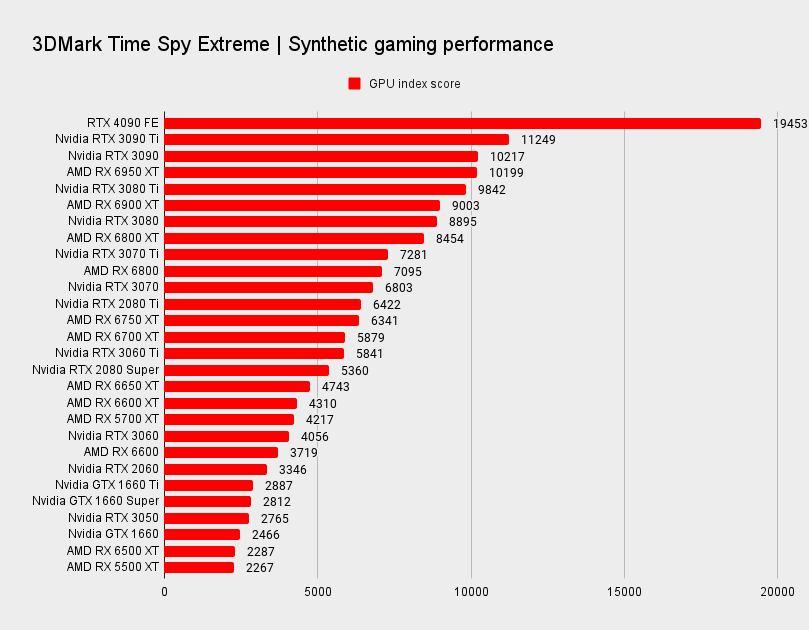
MSRP list
Here’s a list of the manufacturer set retail prices (MSRP), or recommended retail price (RRP), for most the latest graphics cards. For the most part, these are the set prices for the stock or reference versions of these cards, if applicable, and not representative of overclocked or third-party graphics cards, which may well be priced higher.
Nvidia
- RTX 4090 – $1,599 | £1,699
- RTX 4080 16GB – $1,199 | £1,269
- RTX 3090 Ti – $1,999 | ~£1,999
- RTX 3090 – $1,499 | £1,399
- RTX 3080 Ti – $1,199 | £1,049
- RTX 3080 – $699 | £649
- RTX 3070 Ti – $599 | £529
- RTX 3070 – $499 | £469
- RTX 3060 Ti – $399 | £349
- RTX 3060 – $329 | £299
- RTX 3050 – $249 | £239
AMD
- RX 6950 XT – $1,099 | ~£1,060
- RX 6900 XT – $999 | ~£770
- RX 6800 XT – $649 | ~£600
- RX 6800 – $579 | ~£530
- RX 6750 XT – $549 | ~£530
- RX 6700 XT – $479 | ~£420
- RX 6650 XT – $399 | ~£389
- RX 6600 XT – $379 | ~£320
- RX 6600 – $329 | ~£299
- RX 6500 XT – $199 | ~£180
Graphics card FAQ
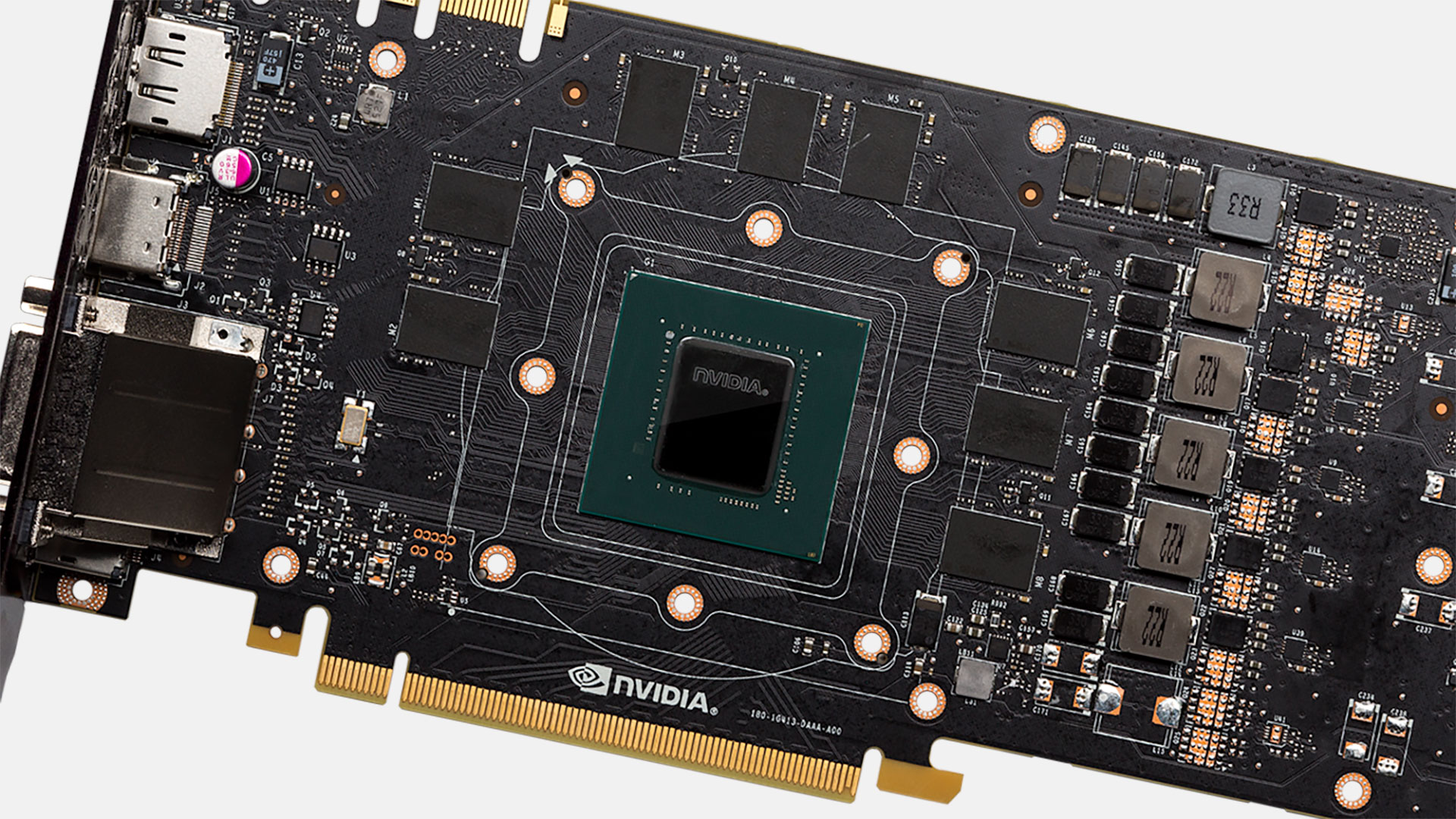
Which is better GTX or RTX?
The older GTX prefix is now used to denote older Nvidia graphics cards which don’t have the extra AI and ray tracing silicon that the RTX-level cards do. This RTX prefix was introduced with the RTX 20-series, and highlights which cards have GPUs which sport both the Tensor Cores and RT Cores necessary for real-time ray tracing and Deep Learning Super Sampling (DLSS).
Nowadays you’ll only find older 16-series GPUs with the GTX prefix attached, so it’s pretty much RTX all the way.
Is ray tracing only for RTX cards?
The RTX prefix is only used to denote cards which house Nvidia GPUs with dedicated ray tracing hardware, but they are still using the same DirectX Raytracing API Microsoft has created, and which is used by AMD’s RDNA 2 GPUs and soon to arrive RDNA 3 GPUs.
Intel’s Alchemist graphics cards also support ray tracing, though as more budget offerings you can’t expect super-high frame rates while it’s enabled. Otherwise Intel’s ray tracing acceleration is pretty good.
Is SLI or CrossFire still a thing?
If you’re looking for maximum performance, you used to run two cards in SLI or CrossFire. However, it’s become increasingly common for major games to ignore multi-GPU users completely. That includes all DXR games. There’s also the fact that fewer and fewer modern cards actually support the linking of two cards together.
So, no. It’s not a thing.
Do I need a 4K capable graphics card?
The obvious answer is: Only if you have a 4K gaming monitor (opens in new tab). But there are other things to consider here, such as what kinds of games do you play? If frame rates are absolutely king for you, and you’re into ultra-competitive shooters, then you want to be aiming for super high fps figures. And, right now, you’re better placed to do that at either 1440p or 1080p resolutions.
That said, the more games that incorporate upscaling technologies, such as DLSS, FSR, and XeSS, the more cards will be capable of making a close approximation of 4K visuals on your 4K monitor, but at higher frame rates.
What’s a Founders Edition graphics card?
The Founders Edition cards are simply Nvidia’s in-house designs for its graphics cards, as opposed to those designed by its partners. These are usually reference cards, meaning they run at stock clocks.
Briefly, for the RTX 20-series, Nvidia decided to offer Founders Editions with factory overclocks. These had made it a little difficult to compare cards, as Founders Edition cards give us a baseline for performance, but Nvidia has since returned to producing them as reference again.
Intel also offers something similar with its Limited Edition Arc Alchemist cards featuring its own in-house cooler design, as does AMD with its reference cards.
Source link

